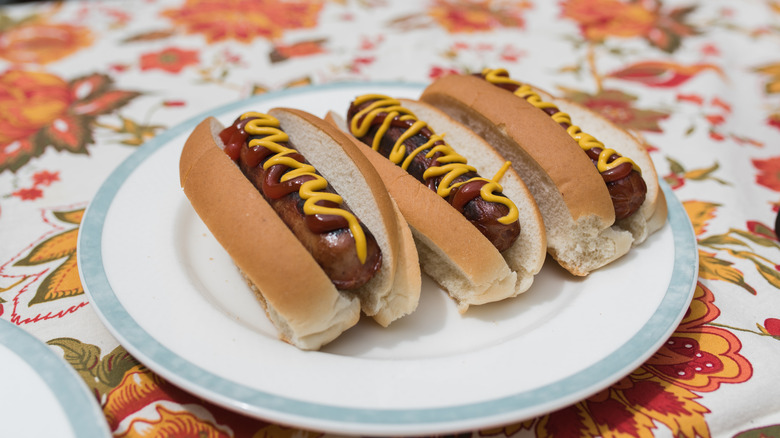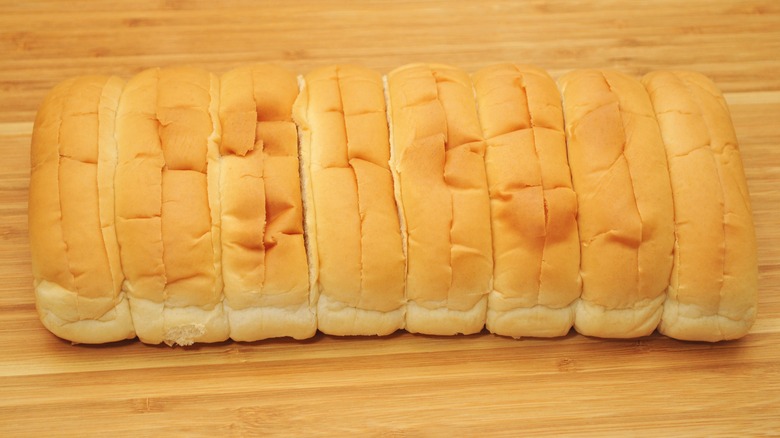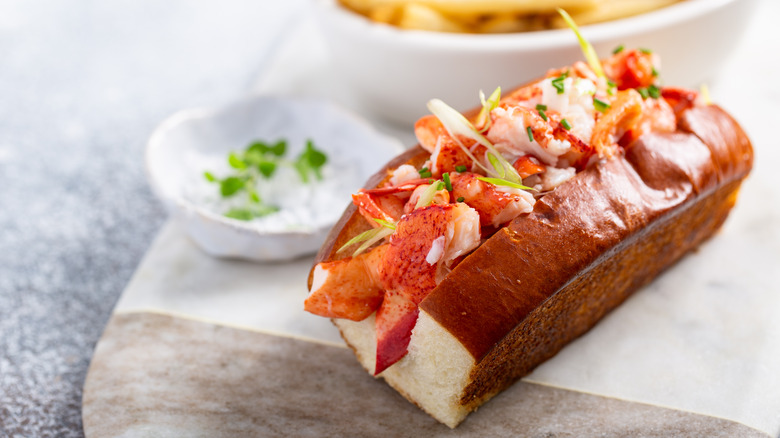What Makes New England Hot Dog Buns Different?
If you close your eyes and picture a hot dog, we have a pretty good idea of what you're imagining — just a simple frank on a bun with a squiggle of mustard. But someone who grew up in Maine or Massachusetts has a slightly different bun in mind than a person elsewhere in the U.S. would. That's because New England hot dog buns are unique, and slightly more complicated in their shape.
Unlike a "normal" hot dog bun, which is cut from the side, or cut end, a New England hot dog bun is sliced from the top or toasted end of the bun. This gives the bun a flat bottom which is much sturdier, and makes it easier to load it up with toppings without fear of it crumbling in your hands. And beyond this, the normally rounded ends of the bun are cut thinner, making for a nicer balance of bread to filling, and gives one an additional pair of edges to toast, should that be they prepare them.
A history of New England buns
There's a fair bit of mystery surrounding when the first standard hot dog buns were first invented, but the common tube-shaped version are believed to have come about in St. Louis or Coney Island in the late 1800s or early 1900s. However, we know pretty firmly where the New England-style buns came from: it was invented by Howard Johnson's. You might recognize Howard Johnson's as a hotel chain today, but it was also a restaurant chain in the mid-20th century.
As the story goes, the Massachusetts restaurant was selling fried clam rolls sometime in the 1940s, and they needed a way for diners to enjoy them without all the clams spilling out. They eventually found a bakery in Maine called J.J. Nissen, and Howard Johnson's hired the bakery to invent a special bread roll that could hold the clams while standing upright. The results speak for themselves, and you can see that same type of bread roll today when you order a lobster roll or a hot dog up in the American Northeast.
Hot dogs and lobster rolls
If you're just visiting New England, you're more likely to try these buns as part of the prized dish in the region, lobster rolls, than with a frank. While there are some differences in different parts of New England — Maine and Connecticut lobster rolls are served cold and warm, respectively — a buttered New England hot dog bun is almost always part of the proper recipe, alongside vegetables, mayonnaise, and a side of potato chips. They're also still used in clam rolls to this day.
No matter what you're filling it with, the additional cut ends of the New England bun make it much easier to butter up and lay on the griddle. Unlike a regular bun, which sits off to the side (or gets lightly steamed) while the poached sausage cooks on the barbecue grill, New England buns are often grilled and buttered before adding the frank. After that, you can top it with sauerkraut, relish, and brown mustard for the full New England experience (no matter where in the world you are).


